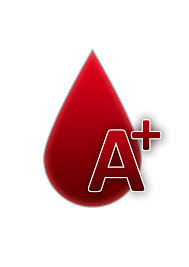1. The Second Most Common Blood Type
The A positive blood type is actually the second most common blood type. This blood type is present in 1 out of 3 individuals. This means approximately 35.7% of the population has an A positive blood. However, not all of the ethnic groups share the same proportions of A positive blood types. This blood type is present in about 33% in Caucasians, 24% in African American, 29% in Hispanic, and 27% in Asian.
2. Inheritance Patterns
The ABO gene found on chromosome 9 determines the ABO blood group system. A and B genes are codominant in relationship, making the expression of both antigens A and B when either alleles A or B is present. Blood Group A has an A antigen on red cells with the B antibody in the plasma.
How is A Positive blood type inherited?
If parental blood groups consist of O and A, the child’s blood group will either be O or A.
If parental blood groups consist of O and AB, the child’s blood group will either be A or B.
If parental blood groups consist of A and A, the child’s blood group will either be A or O.
If parental blood groups consist of A and B, the child’s blood group will either be one of O, A, B, or AB.
If parental blood groups consist of A and AB, the child’s blood group will either be one of A, B, or AB.
If parental blood groups consist of B and AB, the child’s blood group will either be one of B, A, or AB.
If parental blood groups consist of AB and AB, the child’s blood group will either be one of A, B, or AB.
Read interesting facts about blood donation here.
3. Blood Type Compatibility: A+ Can Only Receive A+, A-, O+ and O-
A person with an A positive blood type has antigen A on red cells. Having the presence of A antigen, A positive blood type can accept A+ and A-, along with A and B antigen free blood types O+ and O-. Transfusions with any other blood group can trigger an immune response.
4. Blood Type Compatibility: A+ Can Be Given To A+ and AB+
An A+ donor is only compatible to donate blood to blood groups A+ and AB+ because of the presence of antigens A and Rh in the donor’s blood. An individual can donate red blood cells every 56 days.
5. Plasma Type Compatibility: A Can Receive A and AB
Blood Type A doesn’t carry the A antibody, making blood type A group compatible to receive plasma from groups A and AB. However, blood type A plasma can only be given to type O and A recipients. A person can donate plasma every 28 days.
6. Has an Rh Factor
Rh Factor is an additional marker in the blood. This can be classified as either Rh positive or Rh negative. This marker is only used for genetic differences. A person with an A Positive blood type is Rh positive. Also read about A Negative Blood Type.
7. Sensitivity Towards Specific Diseases
Blood Type A is believed to influence natural risk and sensitivity towards diseases like cancer, allergies, diabetes and cardiovascular diseases. It’s best to plan regular screening for these conditions. A proactive mix of specialized dietary guidelines and lifestyle strategies can help maximize overall health in order to achieve increased longevity, greater vitality and mental clarity.
8. Blood Type A Personality
Individuals with blood type A has been associated with specific personality traits. They are described to be analytical, inventive, detail oriented, creative, good listeners and sensitive to the needs of others.
9. Diet Recommendations
It is recommended for blood type A individuals to follow a plant-based and low-fat diet. This can be helpful the prevention of potential diseases associated with blood type A individuals. A vegetarian diet works great to keep oneself active, fit and healthy. This will involve lots of fresh fruits, legumes, fresh green vegetables, beans, whole grains, and tofu. Vegetable oils, soy products and pineapples can be helpful for weight management. Furthermore, high-carb dairy products, meat and wheat products should be avoided. Junk, greasy and processed foods should also be avoided to promote a stress free intake regimen.
10. Exercise Recommendations
There can be heightened cortisol levels in blood type A individuals. This increase makes it hard for them to handle stress. However, cortisol levels has been known to be reduced with the practice of regular exercise programs that helps promote calmness and focus. However, overtraining should be avoided because it can increase cortisol levels.



 Contact Us
Contact Us







 Hospitals
Hospitals
 Doctors
Doctors
 Diagnostic
Diagnostic
 Pharmacy
Pharmacy
 Health Tips
Health Tips
 Blog
Blog

























Comments